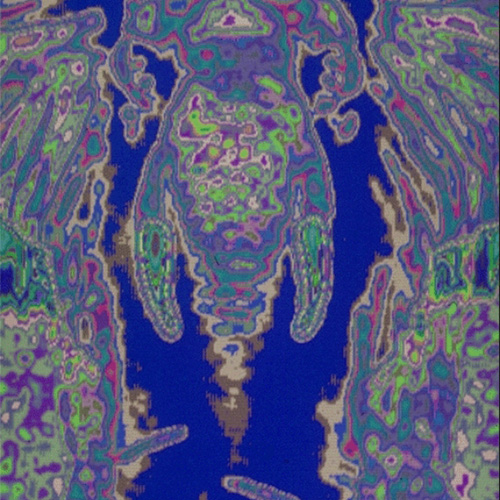



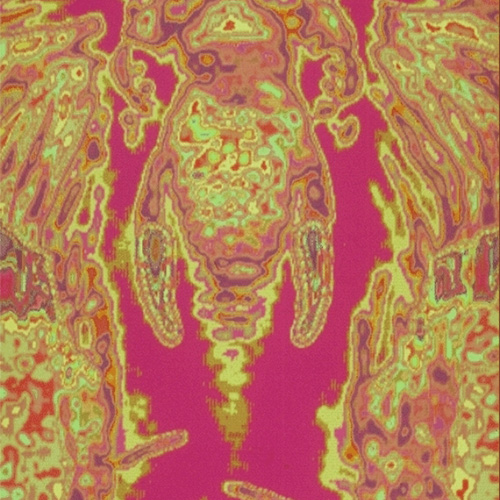

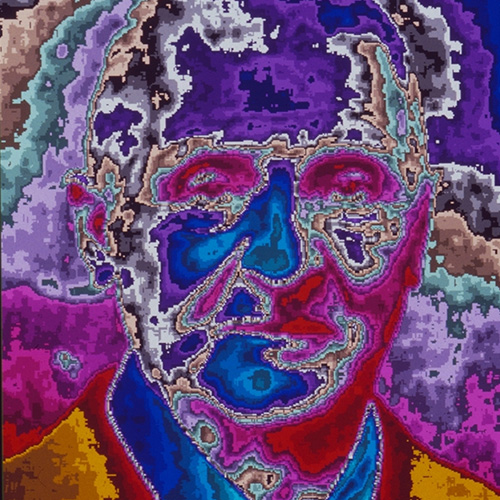

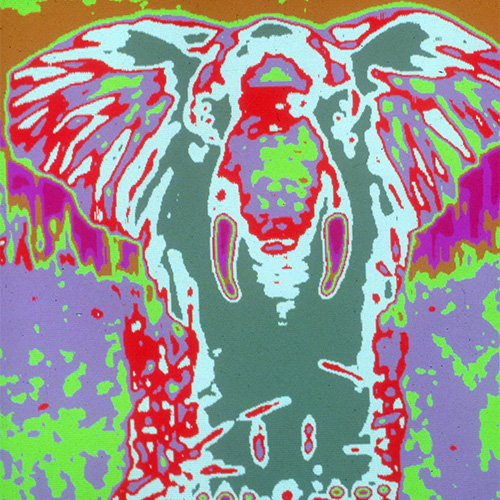



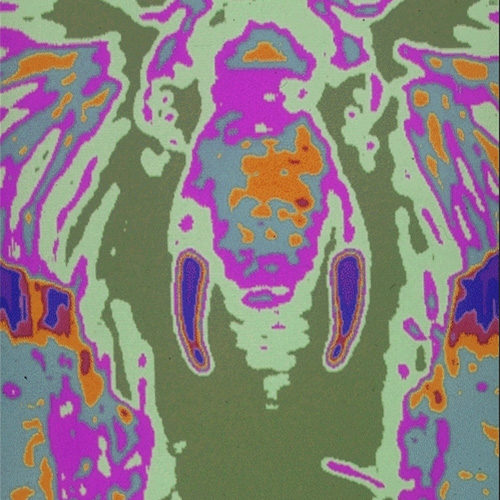



Picture Processing Series
The DIBIAS system, formerly used by the German Aerospace Centre (DLR), was designed for processing satellite images. The system used the latest methods of picture processing. The system used the latest methods of picture processing. Over a period of many years, Herbert W. Franke, alongside the physicist and programmer Horst Helbig of the Institute of Communications Technology, was able to utilize the system for more creative purposes. So the mammoth project Math Art was born. Today, the term denotes the combined results of a long series of experiments stemming from this project. The primary focus here was on the application of mathematical methods, which, however, were developed and used for aesthetic purposes rather than scientific ones.
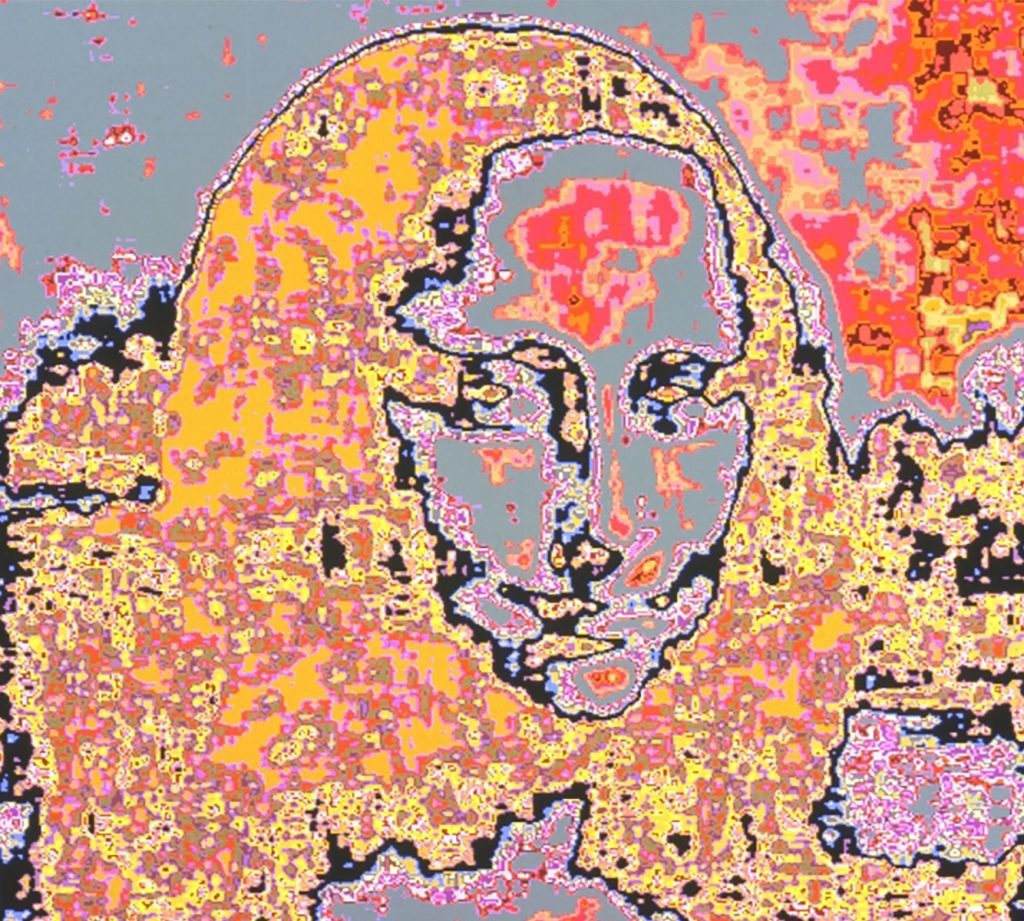



However, Franke also used the system to process several portraits in the Picture Processing series, which comprises only a few motifs – similar to the well-known Einstein series from 1974. For example, Franke manipulated the portrait of Anton Bruckner for Ars Electronica in 1979, and the portrait of Mona Lisa and David Bowie in 1986. They were joined by a mini-series featuring an elephant in 1983.
The term ‘Math Art’ is used to denote the results of a long series of experiments that Herbert W. Franke conducted together with the physicist and programmer Horst Helbig starting in 1980. The main goal of the project, spanning 15 years in total (1980-1995), was the study of scores of mathematical disciplines in terms of their aesthetic scope and the visualisation of complex mathematical relationships ranging from algebraic formulas to stochastic correlations. The project not only explored the aesthetic dimension of formulas and functions, but also developed a whole series of new graphical procedures that became an integral part of the DIBIAS (digital image analysis system) software, including displays in 2D and 3D as well as subsequent processing using the methods of image transformation (picture processing). At the heart of the computer was a Comtal image processing system and DIBIAS (digital image analysis system) software with a resolution up to 2048 x 2048 pixels and approximately 16 million colours.
Click here for the other series in Math Art:
Algebra series
Letters series
Stage Design series
Fields series
Fourier Transformations series
Fractals series
Complex Numbers series
Logic series
Chance series
